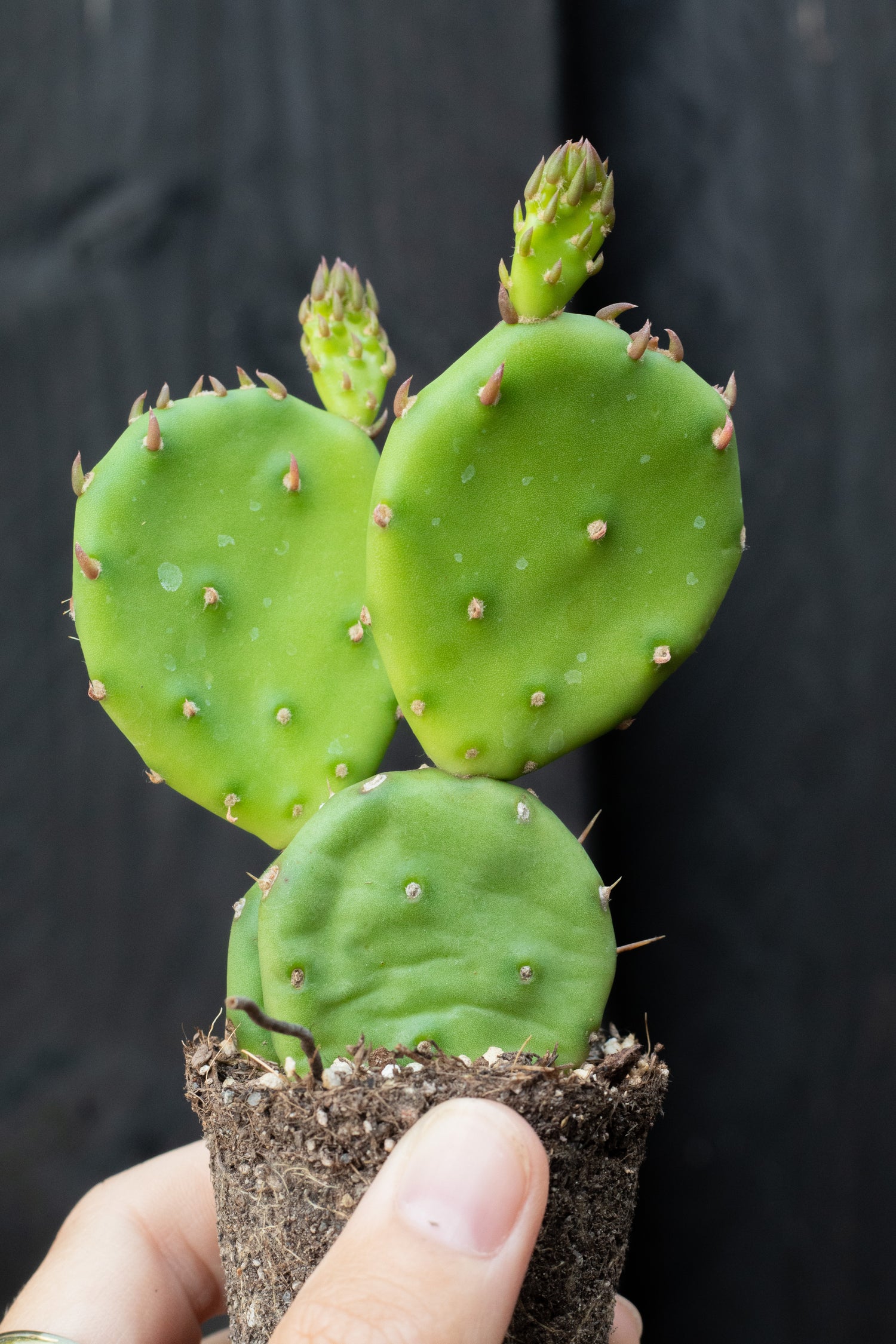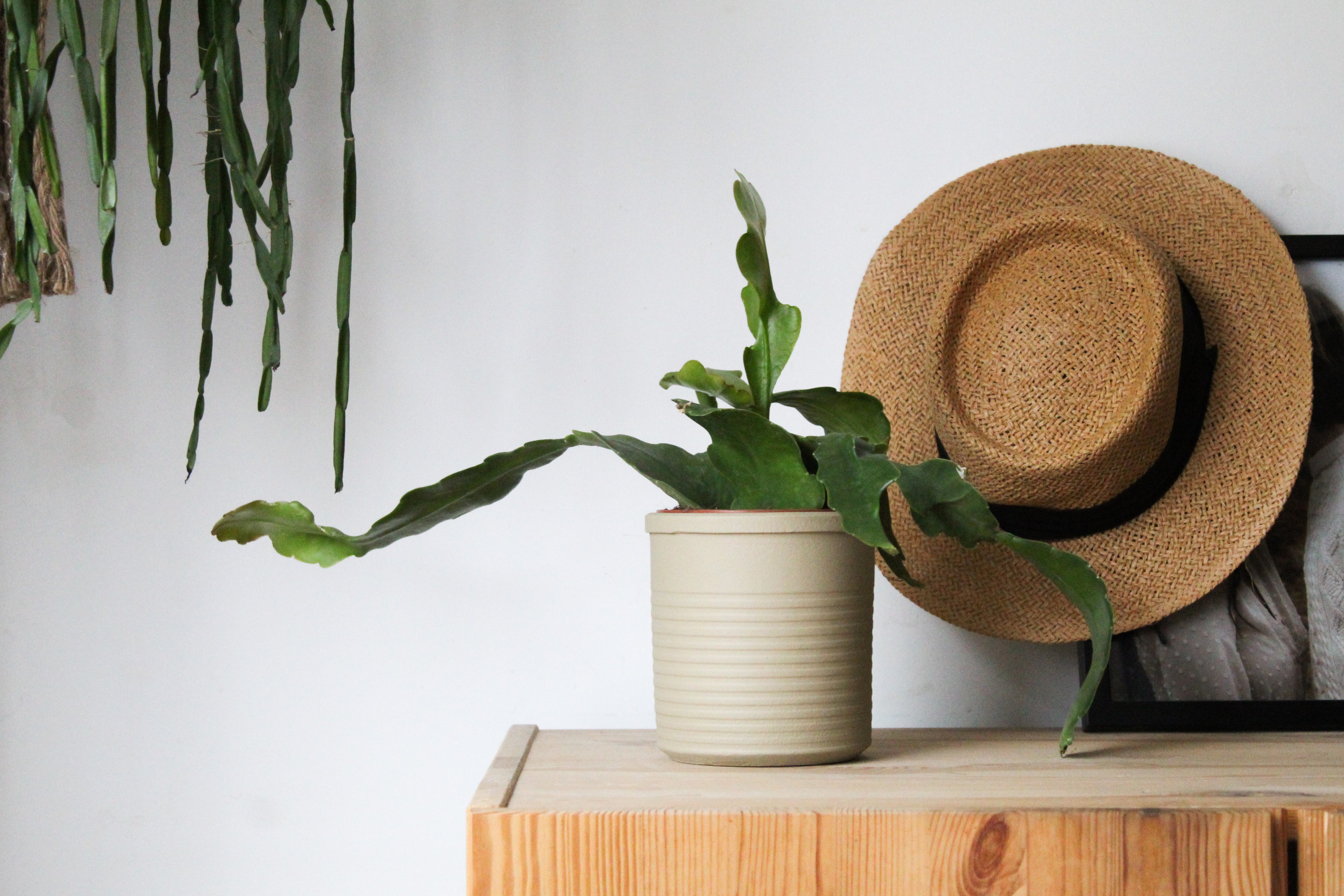The Aeonium
Who knows, you might recognize them from gardens in Southern European countries or you might have a beautiful one on your terrace in the summer. The Aeonium is a relatively unknown succulent plant species. However, it comes in many colors and shapes and is very easy to care for. We first got them in the webshop a few years ago. At the time, we didn't collect Aeonium ourselves, but we were immediately captivated by their beauty and color. That's how we started collecting them for our private collection and in the webshop. That's why I'd like to take you along in this blog to the background, care and many shapes of the Aeonium.

Background:
The Aeonium is native to Europe and grows mainly on the Canary Islands. Here it often grows between cracks on rocky slopes. Because there is little rain in spring and summer and the sun is very hot, this is their rest period. The leaves often fall off partially and a small compact rosette remains. When there is more rainfall in autumn and winter, the growth period of this succulent begins. The rest and growth period as described here applies to plants in nature. The plants in our country often follow a different pattern because we have a colder climate here. More about this later in the blog, in the care section.
The Aeonium grows in a rosette. Over time, it forms a stem on which the rosette grows. Old leaves at the bottom of the rosette dry up and fall off. These are replaced by new leaves at the top of the plant. In this way, it also slowly forms a stem. When its stem grows larger, it also starts to make branches. These first start as a small rosette between the leaves of the main plant and then slowly grow into side branches.
The Aeonium has about 35 species in nature. The best known of these is the Aeonium arboreum. But over the years, many new hybrid forms have been added in both American and Asian nurseries by crossing and breeding the plants. These hybrids often have the most beautiful colors, combinations and rosette shapes.
Breeding/propagation:
The Aeonium can be propagated from seed or by cuttings. Seeds are few and far between. For this reason, they are mainly grown from cuttings. Cuttings can be taken in the following ways:
- Cutting off branches. Cut the rosette with about 2 cm of stem attached.
- Cutting off the main rosette when there are no branches. Keep the rootstock. New rosettes will grow from this. This is also a way to get thick, sturdy trunks.
- Pinching the rosette. This means that you use a needle to break the growing point of the rosette. This causes the plant to form multiple rosettes that can be cut again.
The cuttings rosettes can be potted again after a few days of drying in an airy and slightly moist soil. They root very easily, usually already after 1-2 weeks.
Care:
An Aeonium is very easy to care for. However, there are a number of important points regarding water, light and nutrition.
If we look at Aeoniums in nature, they get full sun all day long. So give them as sunny a spot as possible. Sunlight affects the growth and color of the succulent. With sufficient sunlight, the rosettes get a compact shape and sturdy leaves. The color also becomes much more intense due to the sunlight. However, you cannot avoid the color of the plant becoming lighter or green again in the winter period, for example. More about this later.
The Aeonium can handle a lot of water when it is growing, but can also go a long time, several months without water during the rest period. With us, the plants grow mainly in the spring and summer. The summers are not so hot that the plants go into rest and in the winter the sun shines too little. Because of this, you want them to rest in the winter, so that you maintain the beautiful growth of the spring and summer. For this reason, water them once a month during the rest period. During the growth period, they can be watered once every two weeks. If it is a long warm period and the root ball dries out quickly, you can also water them once a week during the growth period. Aeonium species grow quickly and also use a lot of water. When the temperatures are warm, they will also not rot quickly.
During growth, Aeonium species like to feed. Give the feed once a month during the growth period while watering. Feeding supports resistance, ensures strong and compact growth and a sturdy stem.
To colour:
Aeonium succulents come in many different colours. This makes them so interesting and real eye-catchers. From fresh green to purple-pink and orange-red plants. But I personally find it very nice that the colours of the Aeonium change with the seasons. For example, a plant that has a dark purple colour with a pink edge in the summer, can change back to green with a yellow edge in the winter.
The intensity of the colours is influenced by the sunlight. Besides the fact that it is good for its growth, it is also important for the colour that you give the Aeonium a place that is as sunny as possible. This way the beautiful colours come out.



Flowering:
Aeonium plants do not flower often. It is always said that they die after flowering and that they only flower once. This is often partly true. When a rosette is at the end of its life, it starts to flower. In a few weeks, the rosette changes into a cluster with many small, bright yellow flowers. After flowering, only the rosette that has flowered dies. If you have a beautiful larger, branched plant with many rosettes, the entire plant does not die.
Besides being at the end of their life, a very hot and dry summer can sometimes also trigger flowering.
Pests:
Aeonium plants are especially susceptible to mealybugs. Check your plants for this every now and then. The mealybugs can get onto your plant via air currents. They often sit in the top between the leaves where they are difficult to see. Or on the stem just below the ground.
The Aeonium is not unaffected by other known pests of cacti and succulents. But you rarely see these on the plants.
Hybrids
In addition to the many Aeonium species that can be found in nature, the most beautiful hybrids are also grown. These originate from crosses of species that are grown from seed or from breeding of selected plants with unique external characteristics. These hybrids are not always equally stable. Sometimes you see after a few years that the rosette of the plant returns to its original form or that certain colours and patterns change.
Outside
The Aeonium is not winter hardy. However, she loves to be outside with us from mid-May to the end of September. Due to the rain we get in our summer and the full intensity of the sun she gets outside, her leaves become beautiful, firm and beautifully colored.
When you first put them outside, it is best to let them get used to it. Do not put them in full sun for a whole day, but build this up over a week. If a period of, for example, a week of heavy rain is predicted in spring or summer, this is not bad for the plant. It can handle this well without rotting. I would recommend putting them in a pot where the water can drain from the pot. This prevents a layer of water from remaining at the bottom of the pot.
The Aeonium succulents of Ikhebeencactus
Are you curious about these beautiful plants and would you like to have them in front of your window or in your garden? You can view and order them here !




